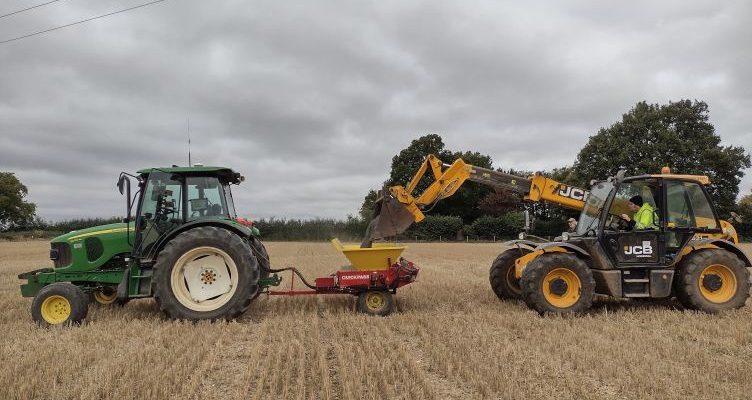The Earth has a natural waste disposal system for carbon dioxide. Rocks, such as the sides of mountains, play an important role in removing the climate-damaging greenhouse gas from the atmosphere. Because with every rain shower their rock is washed out a little. The dissolved components such as calcium bind CO₂ from the air and flush it into the sea. At least part of it, because natural climate waste removal is not strong enough to compensate for man-made climate change.
But couldn’t the rock contribute more to climate protection than it does now? This idea has been discussed for several years under the heading of “accelerated weathering”: crushed rock dust is supposed to be scattered on fields in order to bind greenhouse gases. But until now it was unclear how well this works in practice.
Well researchers put in the specialist magazine PNAS results are quite hopeful: Accordingly, a lot of CO₂ can be captured from the atmosphere with the stone dust. At the same time, farmers could use the technology to achieve better harvests and reduce the use of fertilizers.
For four years, the team led by David Beerling from the University of Sheffield in the United Kingdom repeatedly spread basalt rock in a test field in the USA about the size of five football fields – around 200 tons per year. Based on soil measurements, the researchers estimate that the soil absorbed between eleven and 15 tons of carbon dioxide each year. That is about one and a half times the per capita emissions in Germany.
Meanwhile, the scientists alternated between growing corn and soy in the fields. According to the researchers, the corn harvest improved by twelve percent after the basalt rock was spread, and the soybean harvest by 16 percent. The team attributes this increase in yield to the release of phosphorus, potassium and other minerals from the basalt dust into the soil. Farmers could therefore also save on expensive artificial fertilizers, according to the researchers. The minerals introduced would also have counteracted the acidification of the soil, which the scientists see as a positive side effect. In addition, the plants did not absorb any more metals than usual, so consuming the products produced in this way is safe, the researchers emphasize.
Basalt dust does not work equally well everywhere
The experimental farm is located in the state of Illinois, in the middle of the “Corn Belt” of the USA, where agriculture is practiced on 70 million hectares. If all farmers there switched to this method, the increased yield would result in additional income of eight billion euros for corn farmers and nine billion euros for areas where soy is grown, the scientists estimate.
However, binding carbon dioxide probably does not work equally well everywhere. During a field test in California Recently, only a sixth of the amount of CO₂ per hectare could be bound as in the “Corn Belt”. The researchers behind this experiment attributed the lower yield to the ongoing drought in California during the experiment. “These reactions require water,” emphasized lead author Iris Holzer from the University of California Davis in a statement. Still, “Even the rare heavy rains we have in the West could be enough to cause increased rock weathering and remove carbon dioxide.”
Used worldwide, the method could bind up to two billion tons of CO₂ annually, according to an earlier study by David Beerling, among others in the science magazine Nature result. This estimate already takes into account the greenhouse gases that arise when the basalt rock is mined, crushed and transported. That is three times the amount of greenhouse gases that a country like Germany emits. At the same time, the limitations of the method become clear: emissions from the combustion of fossil raw materials such as oil and gas are almost 20 times greater. There is no way around reducing greenhouse gases, despite improved waste disposal.

